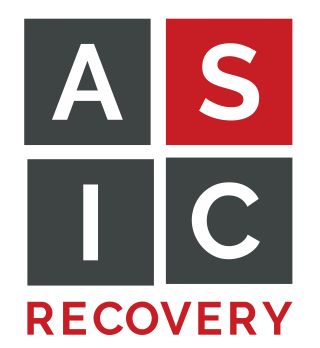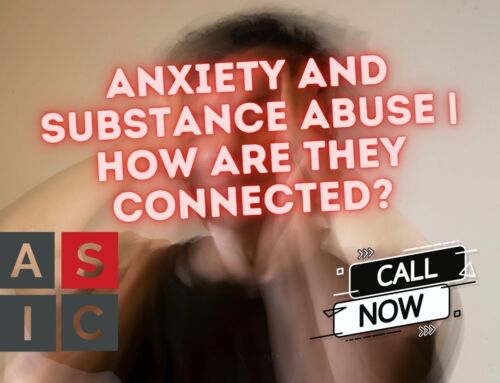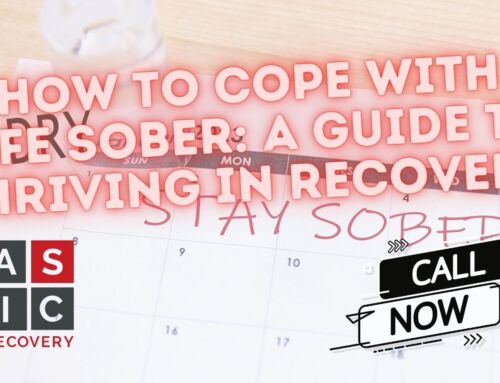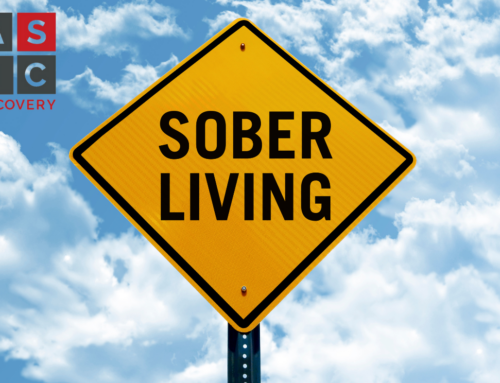Dialectical behavioral therapy (DBT) is essentially another type of cognitive behavioral therapy (CBT). However, it has specific principles and teaches skills that are not typically a part of regular CBT.
You don’t have to make a choice between DBT and CBT. You can benefit from both equally and use the principles of both to improve your overall mental health.
DBT originated from an effort to better help individuals with borderline personality disorder (PBD). Since its inception, it has been modified to help with other mental health conditions. These modifications may vary depending on the mental health conditions that are being treated.
It has shown to be particularly helpful for people who have trouble with emotional regulation, substance abuse issues, and post-traumatic stress syndrome (PTSD).
DBT can occur in different settings including
- Group therapy – Behavioral skills are taught so the group can work on applying them when interacting with one another and/or the counselor.
- Individual therapy – Regular sessions with a licensed therapist help a person apply DBT principles to their day-to-day living.
- Phone sessions – Phone calls to a therapist can help a person when they find themselves in a difficult situation that they don’t know how to maneuver through.
DBT has a set of principles that are the pillars of this type of therapy. They are:
- Biosocial theory
- Acceptance and validation
- Behavior change
- Emotional regulation
- Distress tolerance
- Interpersonal effectiveness
DBT skills are related to these principles. These DBT skills are:
- Core Mindfulness skills
- Emotional regulation skills
- Distress tolerance skills
- Interpersonal effectiveness
In this article you’ll read about:
- What DBT is
- The principles of DBT
- DBT skills
- The components of DBT
- The mental health conditions that DBT can help with
If you or someone you know has a mental health condition, keep reading to learn more about DBT.
At ASIC Recovery, our Intensive Outpatient Program (IOP) is dedicated to helping individuals develop healthier habits and build a life in long term recovery.
What is DBT?
DBT emerged from the effort to better help people with BPD. BPD is such a unique mental health condition, that regular CBT is not as effective as it is with other mental health conditions. “Dialectal” is the integration or synthesis of opposites.
The opposites in DBT are “acceptance and change”. A therapist can accept your behavior and validate your feelings while at the same time addressing the need for behavior changes. Once you feel “heard” by a therapist, you are more likely to utilize the tools and skills to make a positive change.
From the principles of acceptance and change come four types of skills:
- Mindfulness
- Emotional regulation
- Distress tolerance
- Interpersonal effectiveness
DBT can occur in different settings such as:
- One on one counseling
- Group counseling
- Regular phone check-ins with therapist/support group
The Principles of DBT
Biosocial Theory
The biosocial theory of DBT is that when a person is emotionally sensitive, lives in and interacts with an invalidating environment, patterns of emotional regulation develop. Emotional sensitivity could mean
- A person has a strong over-emotional reaction to emotional stimuli
or
- When a person experiences intense emotions they have trouble calming down.
An invalidating environment has characteristics such as:
- Criticizing you for emotional expressions that are not considered the “norm” for society. For example – You’re a man and you are the primary caretaker of the children during the day while your significant other works. An invalidating environment may say that you’re not a real man because of this.
- Punishment of emotional displays. For example – a young boy cries because he’s upset about his mother going on a long trip. The father then gets mad at his son for crying and tells him “men don’t cry”.
An invalidating environment may also send a message that solving problems is always easy. It may promote the “get over it” mindset. If you come from an invalidating environment you may find it difficult to regulate your emotions, develop an addictive behavior, and/or have a difficulty with expressing your emotions.
Acceptance and Validation
DBT is aimed at helping people that come from an invalidating environment. It focuses on being understanding and accepting of a person. DBT validates a person’s experiences, thoughts, and emotions.
This doesn’t mean a therapist using DBT approves of destructive behaviors. It means that they are acknowledging the person’s emotional state, attempting to be understanding, while at the same time teaching skills to change unhealthy thoughts and behaviors.
When you come from an invalidating environment, you may feel like you aren’t important and that nobody really cares about you. A therapist using DBT can help you realize that you are accepted just the way you are and that you matter.
This can lead to self-love which can promote positive changes in your behavior.
Behavior Change
Self-destructive behavior can lead to serious problems for an individual. If you are exhibiting self-destructive behaviors a DBT counselor can use behaviorism principles to understand these behaviors with the intent of modifying them.
A therapist can help identify the events that precede these behaviors. These events that precede these behaviors may keep you from getting better even though you have the desire to get better. DBT encourages you to interact with people in your environment and practice healthier responses to situations that are emotionally charged.
Emotional Regulation
Emotional regulation is both a DBT principle and a DBT skill.
Certain mental health conditions can make it difficult to deal with your emotions and keep them from getting out of hand. With emotional regulation skills, you can start to navigate intense feelings more effectively.
You will learn to identify the emotion, put a name to it, and ultimately change your emotions with other DBT skills such as mindfulness. Recognizing your emotions when they come up, allows you to take a step back from a situation. Your emotional vulnerability can be reduced leading to healthier emotional experiences.
Emotional regulation can help you identify feelings and then do the exact opposite. Perhaps you feel sad and want to isolate yourself in your house all week. Once you identify you are sad you can make the effort to do the opposite by calling friends and family or going to social gatherings.
Distress Tolerance
Some mental health conditions can make it difficult to deal with a crisis and other situations. If you have a mental health diagnosis, you may find that your perception of events is somewhat faulty.
These faulty perceptions are called cognitive distortions.
Different cognitive distortions include:
- Catastrophizing
- Overgeneralization
- Shoulds
- Filtering
- And more
Take catastrophizing for example:
Catastrophizing has to do with you expecting the worst to always happen no matter what situation you’re in. Even if the conclusion is highly unlikely, you convince yourself that a situation is going to turn out negatively and not in your favor.
Distress tolerance skills teaches you self-soothing by using your senses. In order to get out of your head from negative and overwhelming thoughts you can focus on your senses in the following ways:
- Smell – take a moment to breathe and identify what you are smelling in the current moment. Maybe it’s a candle or a diffuser with essential oils. You can make a space in your home where you engage in aromatherapy.
- Hear – Listen to the sounds around you. Take a step back and notice the birds chirping. It’s also effective to listen to the sound of your breathing.
- See – Concentrate on the different colors in your environment. You can begin to say things out loud such as “red chair, blue bag, purple carpet”, etc.
- Taste – Carry around a piece of chocolate or any candy with you. When overwhelmed, eat some candy but really pay attention closely to how it tastes and the shape of the candy.
- Touch – Focus on how your clothes feel on your body. If you are sitting in a chair you could focus on massaging the arms of the chair.
These exercises are extremely helpful when feeling overwhelmed.
Distraction is another technique of distress tolerance. Sometimes you just need to walk away and focus on something different. If you’re getting stressed out about a particular situation that you have no control over, you may want to go read a book, play with your pets, or even watch some TV.
Distraction can help your emotions settle down.
Radical Acceptance is another distress tolerance skill. This takes practice. Radical acceptance teaches you to make peace with the present moment and make peace with the fact that many things are out of your control. It can also help you accept that things can change.
Radical acceptance is about giving up the need to control everything around you. You can observe a situation without an emotion attached to it. Once you give up the responsibility to change the circumstances of a situation, you can move forward. It allows you an opportunity to get unstuck from unwanted emotions.
Other distress tolerance techniques include “resetting the system” and “weighing the pros and cons”.
Interpersonal Effectiveness
Interpersonal effectiveness skills can help your relationships out immensely. Certain mental health conditions can make it extremely hard to maintain healthy relationships with people including your friends and family.
For interpersonal exchanges, there are 3 types of effectiveness. They are:
- Objective effectiveness
- Relationship effectiveness
- Self-respect effectiveness
People want to be heard, validated, and accepted. Listen to others so they feel heard. Interpersonal effectiveness will also help you communicate better, respect yourself, respect other people, and deal with people that you don’t necessarily like or get along with.
Components of interpersonal effectiveness are “being assertive” and “being able to say no”.
Express what you feel and need. If you disagree with someone, there doesn’t have to be a heated argument. You can accept that you have different ideas or opinions and move on.
Some mental health conditions can lead to people-pleasing. Interpersonal effectiveness can elp you say no to certain requests. Again, you can create a boundary and say “no” to things while still being respectful to yourself and another person.
DBT has acronyms that pertain to interpersonal effectiveness. One of these acronyms is:
DEAR
Describe – describe the situation as it is without any judgment.
Express – express yourself and your feelings. Let the person you are interacting with know how you feel.
Assert – Be assertive by telling the other person what you want and what you don’t want.
Reinforce – Reinforce your idea. Let people know why you think your request will be beneficial for everyone. This can help motivate others you’re working with.
Mindful – Be mindful and live in the present moment.
Appear – Appear confident with good posture and a confident tone of voice.Negotiation – Be willing to compromise. Both you and the other person have valid feelings and needs. Negotiation can help both parties get their desired outcome.
Mindfulness
One of the most well-known principles of DBT is mindfulness. There are aspects of Buddhist philosophy within the concept of mindfulness. Mindfulness is the practice of living fully in the present moment.
This skill allows you to catch yourself when you get into a thought loop of any kind. You can then bring your attention back to the present moment. This can be done by focusing on your breath for example.
You may find that you go through your day with relentless thoughts. Thoughts that tell you the story of your life in regards to the past and the future. How much of the day are you fully engaged in the present moment?
It’s common for people to be conditioned to engage with as many thoughts as they can. However, this can lead to negative thought loops that can tear you down over time.
An overactive mind with negative thought loops can lead you to self-destructive behaviors like substance abuse. Many people turn to abusing substances in order to shut their minds off.
Mindfulness is a true pillar of DBT.
The principles of DBT can help you whether you have a mental health diagnosis or not. It can give you the skills to have a calmer, serene, and fulfilling life.
Psychiatry and DBT Therapy
Many people in DBT are coping with conditions such as borderline personality disorder, mood disorders, PTSD, or anxiety. A psychiatrist can prescribe and monitor medications that reduce symptoms like severe depression, emotional instability, impulsivity, or anxiety, making it easier for patients to fully engage in DBT skills training.
Psychiatrists and DBT therapists can coordinate care—psychiatry focusing on biological treatment and safety, while DBT emphasizes behavioral and emotional regulation skills. This integrated approach ensures consistency in treatment and maximizes effectiveness. Psychiatry helps by managing symptoms biologically and ensuring safety, while DBT teaches practical skills to manage emotions and behaviors. Together, they create a stronger path to recovery. Med Harmony psychiatry group based out of Texas can be a great resource for online medication management while in DBT therapy.
IOP at ASIC Recovery
Are you looking for substance abuse treatment in Texas?
At ASIC Recovery, our Intensive Outpatient Program (IOP) is dedicated to helping individuals develop healthier coping skills and build a recovery supportive network in all aspects.
Click to learn more.



